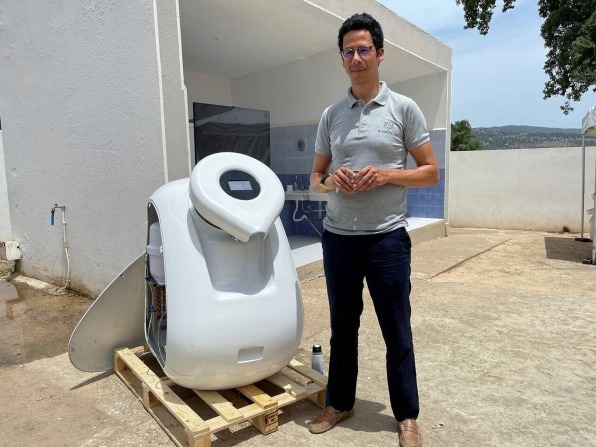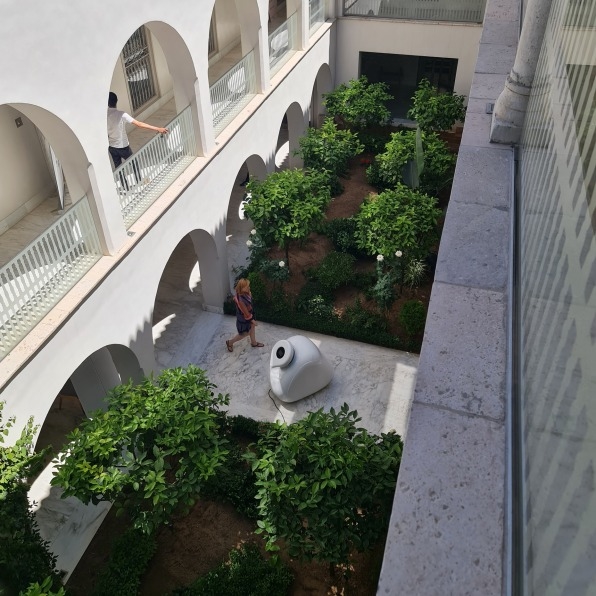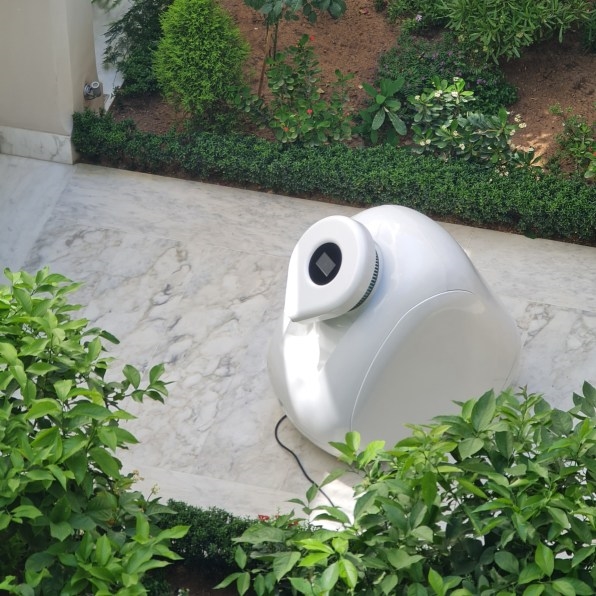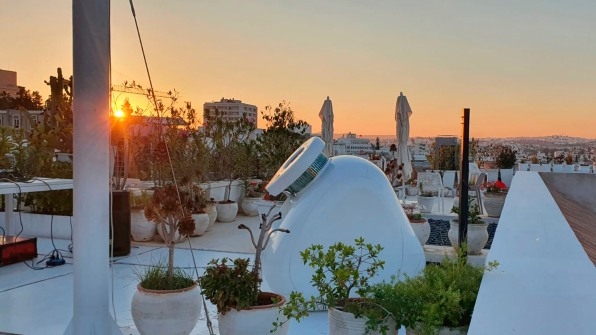About three years ago, Iheb Triki went on a four-day camping trip in the Tunisian desert. After a six-hour drive through mountains of sand, he and nine friends arrived at their destination with 100 liters of bottled water. Then three things happened: Triki saw the sheer volume of bottles laid out in front of him; he noticed the piles of empty plastic trash left over from previous campers; and the next morning, he spotted tiny droplets of dew on the surface of his tent. So Triki, an engineer by training, had an idea.

[Image: courtesy Kumulus]
Triki is now the CEO of a Tunisian startup called Kumulus. The company has developed a device that mimics the condensation process to convert humidity in the air into drinking water. Powered by solar panels, Kumulus 1 is about the size of a large armchair and can produce from 20 to 30 liters of clean water per day, depending on the levels of humidity in the air.
For now, three devices have been deployed in Tunisia and Paris, where they’re being tested. But in the three weeks since it started taking pre-orders, the startup has already received more than 100 of them, worth around $700,000, from clients in France, Italy, Mexico, and Uruguay.
The Kumulus team isn’t the only one trying to harness water out of thin air. Since 2014, water technology startup Source, formerly known as Zero Mass Water, has been using similar technology to pull moisture from the air with solar-powered “hydropanels,” though it can only produce three to five liters of clean water per day. Meanwhile, earlier this year, researchers at the Massachusetts Institute of Technology developed a prototype for a suitcase-size machine that can turn saltwater into potable water. And last year, a team at the King Abdullah University of Science and Technology devised a prototype that pulled vapor from the air and condensed it into water clean enough to grow spinach in the Saudi Arabian desert.
Kumulus, on the other hand, can produce up to 30 liters in 24 hours, according to Triki. (It would be most efficient in coastal areas with high humidity.) The machine works much like the dew that formed on the surface of Triki’s tent: Humid air automatically enters the machine through tiny openings at the top and passes through an initial filter. It is then cooled in a chamber that condenses the moisture in the air and turns it into dew. The water is filtered again, mineralized, and stored in a water tank.
A spout on the outside lets people easily access the water. A screen, meanwhile, displays how much water is available inside the machine; it can be linked to an app that lets users monitor things like water quality and when to change the filter. Triki envisions that eventually it will be a highly customizable device with which users can control the kinds of minerals they can add, like magnesium for people running a marathon.
Kumulus may be a technical machine, but none of this shows on the outside. “We were engineers, and my biggest fear is to have a product that works well technically but isn’t beautiful,” says Triki, who understood the value of design early on and brought on local designer Zouhair Ben Jannet to turn the prototype into a viable product.
Ben Jannet, whose portfolio skews more architectural than industrial design, drew inspiration from amphoras that were once used by Greeks and Romans to transport anything from wine to olive oil. “When I was a child, people used to put water in clay jars in front of their houses for passersby,” Ben Jannet says. “Its form hasn’t changed for centuries. I tried to modernize [it].”

Ben Jannet says that when Triki first approached him, the prototype was a “raw machine” made of metal. “But we’re not made of metal,” he adds. “We need emotions, we need to create a machine to be in harmony with our surroundings, our culture.”
Now the device sports round shapes and a futuristic white coating reminiscent of Eve’s glossy body in Wall-E. The current version is made of the same composite plastic material used to make yachts, but at 77 pounds, it’s heavier than the team would like. The final version—the one that those 100 preorders will come in when they ship in October—will be made of injection-molded recycled plastic, which is much lighter, and makes sense to use in larger quantities due to its cost.

Triki declined to reveal the cost to the team to develop the product, or how much the machine itself will cost, but he says two units are being rented in Tunisia for $99 per month, including regular maintenance and a filter change every six months. Compared to the cost of water in Tunisia, which is 15 cents per liter, Kumulus will end up costing 8 to 9 cents per liter, Triki says.

Kumulus’s target customers include remote hotels that need a better source of drinking water, construction companies that want off-grid water sources on building sites, and nongovernmental organizations that want to provide access to safe drinking water for the 2 billion people around the world who don’t currently have access to it.
The team is working on a smaller model that could fit in the trunk of your car. It would produce considerably less water, about 10 liters per day, but next time you go camping in the Sahara—or the Sonoran desert, for that matter—you could leave your plastic bottle behind.
Fast Company , Read Full Story
(20)